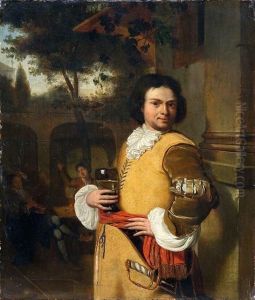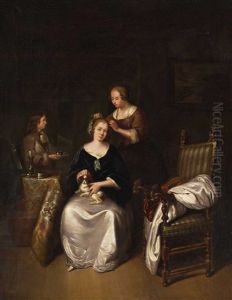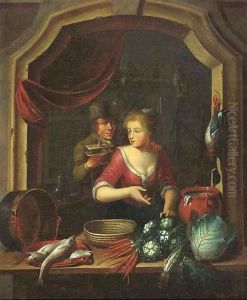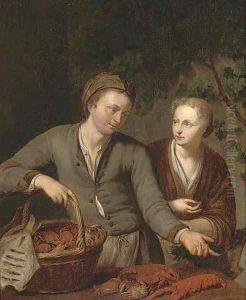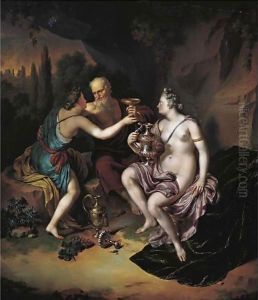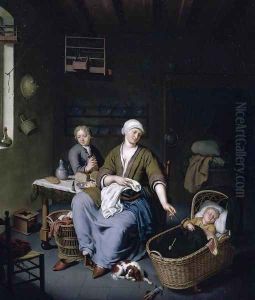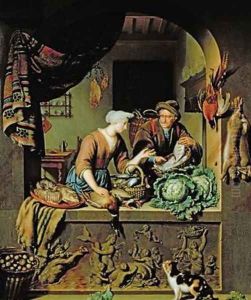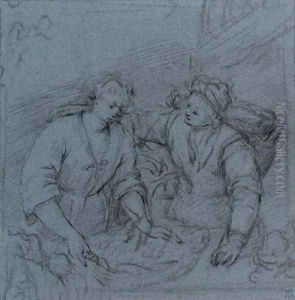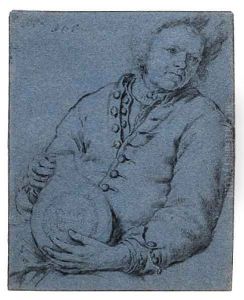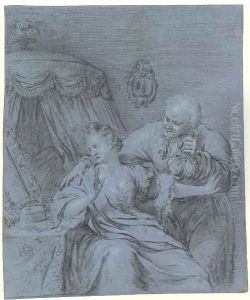Willem Van Mieris Leiden Paintings
Willem van Mieris was a Dutch painter born on June 3, 1662, in Leiden, Netherlands. He was part of a family of Dutch painters, being the eldest son of the prominent genre painter Frans van Mieris the Elder. Coming from an artistic lineage, Willem was naturally inclined towards painting from an early age. He received his initial training from his father, absorbing the meticulous technique and attention to detail that was characteristic of the Leiden school of painting.
Willem van Mieris established himself as a genre painter, following in his father’s footsteps but also expanding his repertoire. His works included a variety of subjects such as history scenes, landscapes, still-lifes, and genre scenes depicting everyday life. He was especially known for his small-scale, highly detailed paintings, which incorporated smooth, almost enamel-like surfaces achieved through painstaking brushwork. Though he was influenced by his father’s style, Willem developed his own distinctive approach by integrating more elaborate narratives and allegorical elements into his compositions.
Throughout his career, Van Mieris enjoyed considerable success and was recognized for his artistic contributions. He became a member of the Leiden Guild of St. Luke and later served as the head of the Guild for several terms. His influence extended beyond his own artistic practice as he taught several students who would continue the tradition of fine detail and precision in Dutch painting.
Despite his initial success, Willem van Mieris’s later works were criticized for lacking innovation and for being overly dependent on the formulaic style that had brought him fame. As the 18th century progressed, tastes in art shifted towards a looser, more dynamic style, and the meticulous technique of the Leiden fijnschilders (fine painters) fell out of favor.
Willem van Mieris passed away on January 26, 1747, in his hometown of Leiden. His legacy is preserved in the works that reside in various museums and collections, depicting a testament to the skill and craftsmanship of the Leiden school and its contribution to Dutch Golden Age painting.
